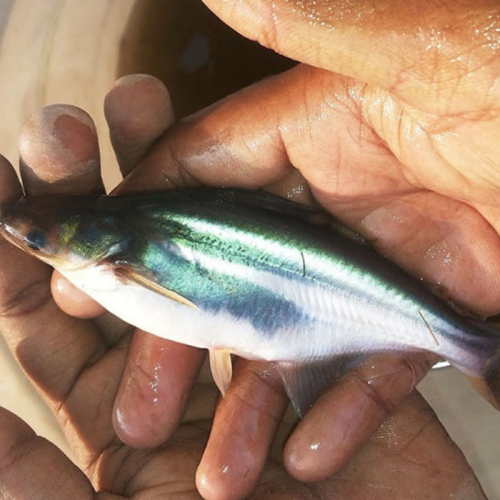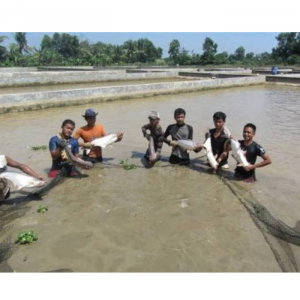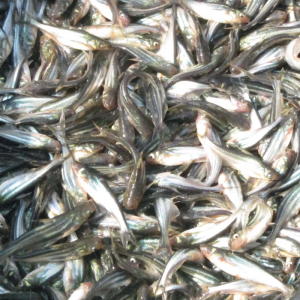
Application of Micro Bubbles Technology in Catfish Rearing
| Tue, 26 May 2020 - 11:30
Application of Micro-nano Bubble Oxygen technology in catfish rearing has markedly positive effect compared to conventional techniques.
Studies on the effects of small or micro bubbles are gaining interest in recent years, especially in Japan. Technology Micro-Nano Bubble (MNO) was first tested in the study of aquaculture in Japan in models fan oyster and scallop. Accordingly, the growth rate of the cultured subjects is improved by ensuring the dissolved oxygen content is always optimal during the culture process.
In fact, nano-sized bubbles can help separate pollutants from water, especially fats, and are thought to greatly affect the pH of water. When micro or nano-sized air bubbles shrink and break down, they will release many free radicals, which can kill bacteria and eliminate odors. Moreover, the technology to create a small and micro-plastic bubble device called Micro-Nano bubble Oxygen (MNO) when applied to aquaculture will bring some benefits:
1. Generating a lot of oxygen is the factor that destroys the bacteria and fungi that cause dangerous animal diseases
2. Generate oxygen to settle alum in water such as iron alum, alum and heavy metals
3. Neutralize ammonia and other toxic gases (chemical or biochemical reactions with the participation of aerobic bacteria
4. Helps to grow and extend the growth cycle of beneficial algae; and v) helping beneficial aerobic bacteria thrive.
Thus, MNO machine has many advantages Vietnam can support and apply well for aquaculture to improve production efficiency. Air bubble technology MNO can be considered as one of the optimal solutions to help aquaculturists succeed.
In recent years, some studies have been conducted to increase the survival rate for fingerling rearing in the Mekong Delta, but the survival rate for rearing pangasius from flour to seed is low due to the impact of too many technical and environmental factors. schools and they need to be controlled and perfected. Therefore, it is necessary to study and improve the breeding process and fingerling rearing to provide sufficient quality Pangasius for commercial farming. The use of MNO to arrange improved nursery systems will be considered a good solution for the complete process of fry to fry.
Application of Micro-nano Bubble Oxygen technology in catfish nursery ponds
Experimental arrangement: Experimental rearing powdered catfish to fry using technology
Micro-Nano Bubble Oxygen according to nursery density. Using MNO (4HP; 3phase; Capacity: 70 m 3 / h) with the ability to provide oxygen 20,5kg / day in the pond area of 2,000 m 2 , in particular:
+ Density of 500 shrimp / m 2 : 3 ponds with Micro-nano Bubble Oxygen technology and 1 control pond.
+ Density 750 shrimp / m 2 : 3 ponds with Micro-nano Bubble Oxygen technology and 1 control pond.
Care and management
Use a mixture of homemade food, fresh duck eggs (only boiled yolk , pureed), S-pak 2/5, S-pak 8/5, Tomking 1s, fingerling feed size 0.4 li 40% protein or more.
How to feed fry
Feed by hand, using the mixture to stir evenly. From 01 to 04 days of age, feed once a day at 9-10am and from 05-30 days old, feed twice a day at 7-8 am and after 15-16 hours.
Time to run fans and MNO
From 10-30 days old, start operating oxygen supply system for fingerlings. Time runs from 3-7 am and afternoon from 14-15 hrs. Depending on the age of fish, weather, stocking density, fish health, adjust the number of fans, reasonable fan operating hours , avoid oxygen content <4 mg / L.
The application of Micro-Nano Bubble Oxygen technology in catfish rearing ponds from fry to fry has shown positive results. The MNO equipment supplied and ensured the dissolved oxygen level was quite high, about 7.42-8.74 mg / L higher than the control pond (5.32-6.85 mg / L) and contributed to the improvement. High survival rate of fish in MNO applied versus non-applied ponds. After 28-29 days of rearing, the production efficiency of the MNO application showed a statistically significant difference between the control and control ponds.
After 29 days of rearing, the survival rate of fry in 02 types of ponds with density of 500 fish / m 2 and 750 fish / m 2 reached 31.23 - 32.32% higher than the control pond (21.36- 22.99%). Similarly, FCR of fish in experimental ponds ranged from 0.56 to 0.62 lower than that of control ponds (0.71 to 0.76).
Comparing the results between the two stocking densities shows that the experimental pond with a density of 750 shrimp / m 2 achieved an average yield of 285.65 kg / 1,000 m 2 higher than the experimental ponds at a density of 500 shrimp / m 2. is 193,35kg / 1,000m 2 and has high economic efficiency than the control ponds (P <0.05).
Application of MNO technology has ensured better supply of dissolved oxygen content for ponds, and also contributed to reducing electricity consumption in operating the oxygen supply system for ponds from 5.0-16.14% compared to with the control pond.
The application of MNO technology in catfish rearing ponds from fry to fry has shown positive results and the stocking density of 750 fish / m 2 is suitable to ensure economic efficiency.
Source: tepbac






















